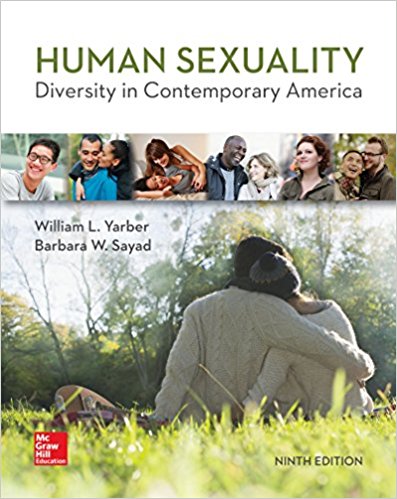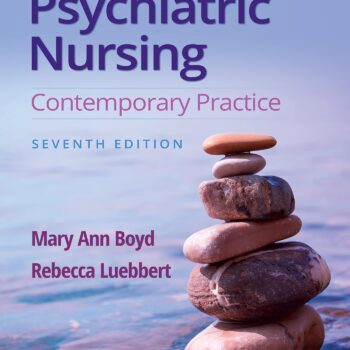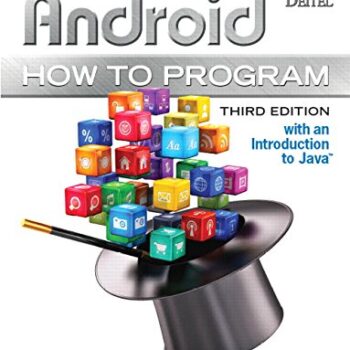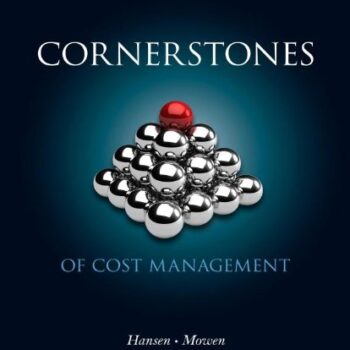
Test Bank Human Sexuality Diversity in Contemporary America 9th Edition by William Yarber
Original price was: $55.00.$30.00Current price is: $30.00.
Digital item No Waiting Time Instant Download
ISBN10: 1260397122 ISBN13: 9781260397123
Although William Yarber’s Human Sexuality: Diversity in Contemporary America (9th Edition) is not an overly difficult course, it does come with a test bank that will offer users a wide variety of practice questions as well as their respective answers. It should be noted that the test bank is meant to aid learners as it allows an individual to endeavor to gain mastery over the content of the course by better comprehending it.
Reason for Utilizing a Test Bank
Every student, regardless of where they are in the world, wishes to revel in academic success. A test bank is that secret ingredient that will make success in this course possible. Here’s why you might consider using a test bank:
- The More the Merrier: The test bank provides an exceptional amount of practice questions revolving around each of the crucial concepts within the book, which in turn allows students to strengthen their grasp of the topic and prepare themselves for examinations.
- Important Concepts and Questions: Each question in the test bank has been meticulously structured and crafted in a manner to help students gain a deeper understanding of the most fundamental concepts and questions revolving around and formulating human sexuality.
- Different Lenses: The test bank takes a broad approach, providing an assortment of questions whether it be multiple choice or true/false, SAQs, and many more, allowing for concepts to be approached from various angles.
- Get Ahead and Stay Ahead: Starting with the test bank at the beginning of the course will allow students to have a greater comprehension of the course material, which in turn would enable them to stay up to date during the rest of the course.
Analysis Topics in the Test Bank
Some major concepts within anthropology can also be used to analyze human sexuality. A few such concepts are:
- Sociocultural Approaches
- Anthropological Approaches
- Psychobiological Approaches
- Diverse Models of Intervention
- Physiology and Neurology
- Political and Feminist Perspectives
- Psychological Perspectives
- Sociological Perspectives
- Anthropological Perspectives
Test Preparation
The test aims to provide students with an understanding of a range of issues concerning HIV/AIDS sexual customs, behavior, and practices. This cannot be overstated since it ensures that the students are not only able to gain new knowledge but are also able to attain excellence in their field of choice. The test assists engineers with the acquisition and mastery of various issues associated with sex and sexuality within diverse cultures.
Enhancement in the Learning Experience
By taking into account the use of this test bank, it becomes clear that this study method provides a lot of further advantages:
- Advanced Information Acquisition: This test can help a person grasp information on human sexuality at a much more advanced level.
- Better Results: There is a significant improvement in the test scores of people who attempt this test on a routine basis.
- Increased Knowledge Base: The foundation for further knowledge is greatly enhanced, aided by easier knowledge comprehension.
Summary
This test bank is of great assistance in any course in human sexuality, with APT exam descriptors students can use this test bank more intelligently in further augmenting their understanding of the material, further preparing for the examination, and improving the overall educational experience.
Test Bank Human Sexuality Diversity in Contemporary America 9th Edition by William Yarber
Chapter 6
MULTIPLE CHOICE
- Ernest Borneman suggested that the first phase of sexual development be called the
- anal phase.
- pPhallicphase.
- Cutaneous phase.
- Latency phase.
Answer: C
Bloom’s Level: Remember
Difficulty: Low
Feedback: Sexuality in Infancy and Childhood (Ages 0 to 11), 156Topic: InfancyAPA Learning Outcome: 1.1 Describe key concepts, principles, and overarching themes in psychologyLearning Objective: Discuss psychosexual development in infancy and childhood, including sexual curiosity, sex play, and masturbation, and the role of the family in teaching children about sexuality.
- Why does Ernest Borneman suggest that infants are in the “cutaneous phase” of sexual development?
- He believed that psychosexual development starts batage three in children.
- He notes the obvious pleasure infants get from tactile stimulation of any kind.
- He believes that too much touching and caressing can sexually arouse an infant.
- He observes that infants get pleasure from touching their genital area.
Answer: B
Bloom’s Level: Understand
Difficulty: Medium
Feedback: Sexuality in Infancy and Childhood (Ages 0 to 11), 156
Topic: InfancyAPA Learning Outcome: 1.2 Develop a working knowledge of psychology’s content domainsLearning Objective: Discuss psychosexual development in infancy and childhood, including sexual curiosity, sex play, and masturbation, and the role of the family in teaching children about sexuality.
- Humans’ earliest lessons come from
- emotional bonding with a parent during the first two years of life.
- Interpretation of others’ body language, facial expressions, and tone of voice.
- Masturbation in infancy.
- Rewards and punishment.
Answer: B
Bloom’s Level: Understand
Difficulty: Medium
Feedback: Sexuality in Infancy and Childhood (Ages 0 to 11), 157
Topic: InfancyAPA Learning Outcome: 1.2 Develop a working knowledge of psychology’s content domainsLearning Objective: Discuss psychosexual development in infancy and childhood, including sexual curiosity, sex play, and masturbation, and the role of the family in teaching children about sexuality.
- According to Ernest Borneman, the single erogenous zone during the first phase of psychosexual development is the
- mouth.
- Anus.
- genitalia.
- skin.
Answer: D
Bloom’s Level: Remember
Difficulty: Low
Feedback: Sexuality in Infancy and Childhood (Ages 0 to 11), 156
Topic: InfancyAPA Learning Outcome: 1.2 Develop a working knowledge of psychology’s content domainsLearning Objective: Discuss psychosexual development in infancy and childhood, including sexual curiosity, sex play, and masturbation, and the role of the family in teaching children about sexuality.
- At what age do boys begin having erections?
- shortly after birth
- two years after birth
- post-puberty
- in the womb
Answer: D
Bloom’s Level: Remember
Difficulty: Low
Feedback: Sexuality in Infancy and Childhood (Ages 0 to 11), 157
Topic: InfancyAPA Learning Outcome: 1.2 Develop a working knowledge of psychology’s content domainsLearning Objective: Discuss psychosexual development in infancy and childhood, including sexual curiosity, sex play, and masturbation, and the role of the family in teaching children about sexuality.
- Girls are capable of vaginal lubrication and genital swelling
- shortly after birth.
-
-
- Three years after birth.
- Post-puberty.
- In the womb.
Answer: A
Bloom’s Level: Remember
Difficulty: Low
Feedback: Sexuality in Infancy and Childhood (Ages 0 to 11), 157
Topic: InfancyAPA Learning Outcome: 1.2 Develop a working knowledge of psychology’s content domainsLearning Objective: Discuss psychosexual development in infancy and childhood, including sexual curiosity, sex play, and masturbation, and the role of the family in teaching children about sexuality.
- When do psychosexual maturity and the ability to love begin?
- At conception, with the division of the fertilized egg
- At birth, with inspection of the infant’s external genitals
- In infancy, with loving touch and handling
- During puberty, with a growing interest in sexual expression
Answer: C
Bloom’s Level: Understand
Difficulty: Medium
Feedback: Sexuality in Infancy and Childhood (Ages 0 to 11), 156–157
Topic: InfancyAPA Learning Outcome: 1.2 Develop a working knowledge of psychology’s content domainsLearning Objective: Discuss psychosexual development in infancy and childhood, including sexual curiosity, sex play, and masturbation, and the role of the family in teaching children about sexuality.
- Children who engage in sex play
- usually, do it with children of their sex.
- Are more likely to have an unintended pregnancy in the future.
- Are typically working through feelings of discomfort with their body. Shouldd be seen by a therapist, as this is a cause for concern.
Answer: A
Bloom’s Level: Remember
Difficulty: Low
Feedback: Sexuality in Infancy and Childhood (Ages 0 to 11), 158
Topic: Curiosity and Sex PlayAPA Learning Outcome: 1.2 Develop a working knowledge of psychology’s content domainsLearning Objective: Discuss psychosexual development in infancy and childhood, i
-






